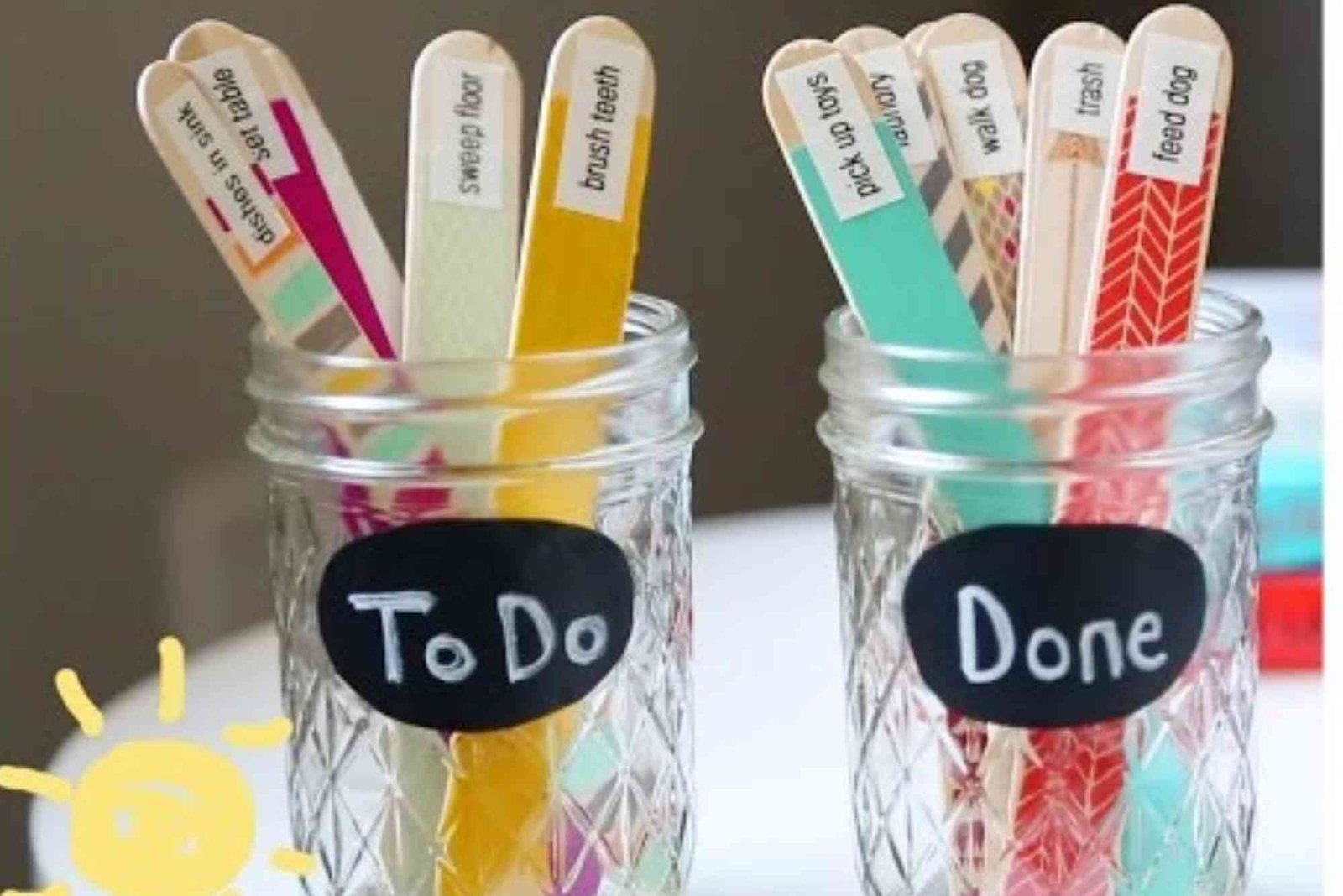Creative Ideas to How for Many (2025 Guide)
Innovation has no limits, especially when we explore Creative Ideas to how for many. Whether it’s about creativity in work, learning, technology, or lifestyle, innovative thinking helps us achieve more efficiently. In this comprehensive guide, you’ll discover practical ways to spark creativity, apply it to real-life scenarios, and think differently for better results.
Understanding the Concept of “Creative Ideas to How for Many”
Before diving into applications, it’s crucial to understand what Creative Ideas to how for many actually means. It refers to using creative thinking to solve multiple challenges or serve many purposes at once. This can apply to education, design, communication, or even personal growth.
Creativity allows individuals to view problems from new angles. It also encourages teams to collaborate more efficiently and find results that benefit many, not just one.
For example, in modern industries, innovation fuels competition. Businesses thrive when they embrace new strategies that help many customers or employees simultaneously.
To learn more about how many types of creative thinking exist, visit Learn more about how many types.
How Creativity Impacts Multiple Fields
Creativity isn’t confined to art or design—it’s a tool that drives growth in every field. Let’s explore how creative ideas influence different areas.
Creative Ideas in Business
Businesses today rely on creative solutions for marketing, customer service, and product development. Using Creative Ideas to how for many, companies can develop solutions that work for multiple customer segments.
For instance, social media campaigns built around storytelling appeal to various age groups and cultures. When done right, creative ideas not only attract attention but also generate loyalty.
To explore how structured systems can enhance innovation, check out Gearbox In Automobile, where engineering creativity meets functionality.
Creative Ideas in Education
Education thrives on innovation. Teachers use Creative Ideas to how for many to reach different types of learners simultaneously. From visual learning aids to gamified lessons, creativity ensures that education adapts to diverse needs.
Integrating technology like virtual classrooms and AI tutors has revolutionized how many students learn effectively at once. This approach supports engagement and accessibility, ensuring every learner benefits.
Creative Ideas in Technology
Technology is perhaps the best example of creativity at work for many. Every device or platform we use today was born from a creative idea meant to help millions.
Smartphones, cloud computing, and automation tools demonstrate how Creative Ideas to how for many change everyday life. Artificial intelligence, for example, allows businesses to automate repetitive tasks—serving many customers faster and smarter.
Creative Ideas in Daily Life
Creativity isn’t limited to professionals. Everyday life offers countless chances to use Creative Ideas to how for many. Whether you’re organizing your home, cooking, or managing finances, creative thinking helps simplify multiple tasks efficiently.
Simple lifestyle hacks—like reusing items, optimizing time, or setting smart routines—can save effort for many activities.
How to Generate Creative Ideas for Multiple Purposes
Coming up with creative ideas isn’t luck—it’s a skill. The goal of Creative Ideas to how for many is to develop one concept that serves multiple needs.
Observe and Reflect
Observation is the first step toward creativity. Watch how things function in your surroundings and ask how they could improve for more people. Reflecting on common challenges often reveals opportunities for innovation.
Combine and Adapt
Most creative breakthroughs come from merging existing ideas. Combining two unrelated concepts can produce unique results that serve many.
For instance, combining traditional learning with technology gave birth to e-learning platforms that benefit millions of students worldwide.
Experiment Without Fear
Testing new ideas is essential. Not every idea will succeed, but every attempt offers lessons. Encouraging experimentation helps identify solutions that truly benefit many people at once.
Collaborate Across Fields
Collaboration enhances creativity. When people from different industries share insights, new solutions emerge that address various needs simultaneously.
That’s why multidisciplinary teams are becoming standard in both corporate and creative sectors.
How to Apply Creative Ideas Effectively
Knowing how to create is one thing; applying those ideas successfully is another.
Identify a Broad Challenge
Start with a challenge that affects many. This ensures that your creative idea has a wide-reaching impact.
Research and Brainstorm
Gather insights from others who have faced similar challenges. Explore articles, interviews, and reports from trusted platforms. A great resource for structured thinking is How Many Types.
Prototype and Test
Develop a simple version of your idea and test it on a small scale. The feedback helps refine the concept for larger audiences.
Step 4: Scale and Share
Once your idea works, expand it. Sharing your innovation with others amplifies its reach, turning one creative spark into something that helps many.
Examples of Successful “Creative Ideas to How for Many”
Example 1: Open-Source Software
Platforms like Linux and WordPress represent perfect examples of Creative Ideas to how for many. Built collaboratively, they serve millions of developers, businesses, and individuals across the globe.
Example 2: Community Gardens
Community gardens turn unused spaces into shared resources. They provide food, education, and social connection—serving multiple people with one idea.
Example 3: Ride-Sharing Apps
Apps like Uber and Lyft revolutionized transport by applying creativity to logistics. These platforms solved problems for drivers and passengers alike, making transportation efficient for millions.
Overcoming Challenges in Creative Thinking
While creativity sounds simple, several barriers can slow progress.
Lack of Confidence
Many people hesitate to share ideas, fearing judgment. Building self-confidence helps overcome this barrier.
Limited Collaboration
Working alone restricts creativity. Collaboration opens doors to multiple perspectives, enriching your ideas.
Resistance to Change
People often resist new methods. The key is to communicate the benefits clearly and demonstrate small wins that show results for many.
Benefits of Applying “Creative Ideas to How for Many”
-
Increases efficiency and productivity
-
Solves multiple challenges simultaneously
-
Promotes inclusivity and collaboration
-
Encourages long-term innovation
-
Builds sustainable systems that benefit society
Creativity is not just an art—it’s a responsibility. When we apply creative ideas that benefit many, we make lasting contributions to our communities and industries.
FAQ: People Also Ask
What are examples of creative ideas that benefit many people?
Examples include open-source platforms, public libraries, and sustainable energy projects—each designed to serve multiple needs simultaneously.
How can I improve my creativity for real-life applications?
Start by observing daily challenges, brainstorming with others, and experimenting with small solutions. Over time, creativity becomes a habit.
Why is creativity important for solving multiple problems?
Because creative thinking enables flexible solutions that can adapt to various challenges instead of addressing one issue at a time.
Can creativity be learned?
Yes. With curiosity, practice, and collaboration, anyone can enhance creative thinking skills to develop ideas that help many.
Start Applying Creative Ideas Today
The power of Creative Ideas to how for many lies in their ability to make life easier, smarter, and more inclusive. Whether in technology, education, or daily life, creativity turns challenges into opportunities.
Now is the time to apply what you’ve learned. Observe your surroundings, collaborate with others, and develop ideas that can make a difference for many.




